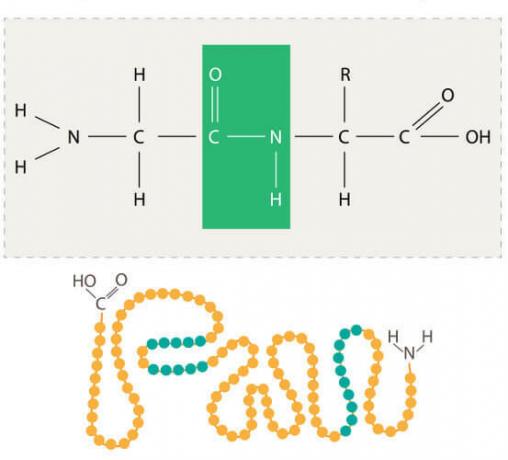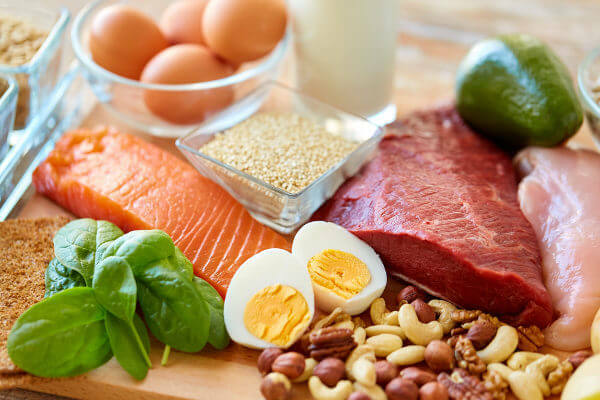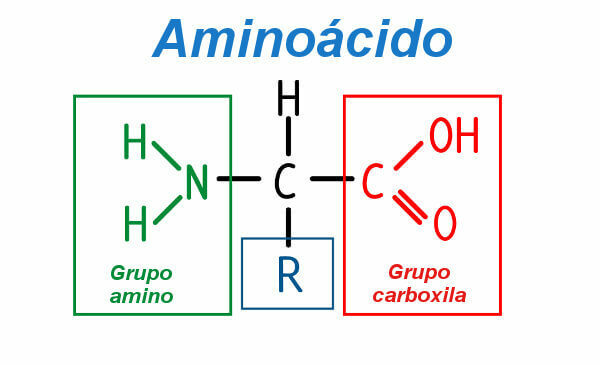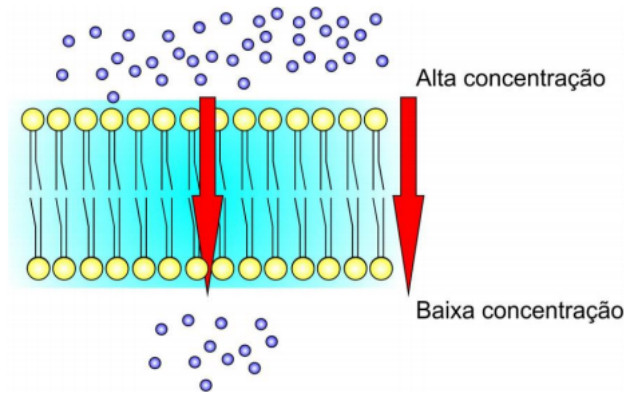At proteins are macromolecules formed by one or more polypeptides (polymers of amino acids), which are arranged in a unique way. They are all made up of carbon, hydrogen, oxygen, nitrogen and sulfur. The presence of phosphorus in these macromolecules is rare.
Proteins are extremely important for living beings, for example, those responsible for forming more than 50% of the dry mass of most cells. In addition, they act as catalysts (change the speed of a reaction), in the body's defense and in several other important functions.
Mind Map: Proteins

To download the mind map in PDF, Click here!
→ protein structure
The three-dimensional structure of each protein is determined by the sequence of amino acids that make up each polypeptide. Below are the four levels of protein structure:

Note how a protein is in primary structure.
Primary structure: it is nothing but the amino acid sequence. It determines the secondary and tertiary structures of this protein.
Secondary structure: it forms when the linking between the repeating elements of the polypeptide backbone occurs. The junctions of these elements are through hydrogen bonds. In this case, it is observed that the chains are twisted, bent or coiled on themselves.
Tertiary structure: corresponds to the form acquired by a polypeptide after the interaction of its side chains. In this case, we observe more folds and curls.
Quaternary structure: there is the association of two or more polypeptide chains.
Do not stop now... There's more after the advertising ;)
→ Protein denaturation
Proteins form a three-dimensional structure, which can be undone if changes in the environment occur. We say that the denaturation of a protein occurred when it unfolds and loses its original shape.. When the protein loses its conformation, it also loses its ability to perform its functions in the body.
→ Globular and fibrous proteins
Proteins can be classified into globular and fibrous. Globular proteins are those that have spherical shapes and are folded several times. Fibrous proteins have an elongated fiber shape. When we compare globular proteins with fibrous ones, we notice that the latter are less compact.
→ Simple, conjugated and derived proteins
Proteins can also be classified as simple, conjugated and derived.
Simple proteins: formed only by amino acids.
Conjugated proteins: when they undergo hydrolysis, they release amino acids and a non-peptide radical. This radical is called the prosthetic group.
Derived proteins: they are not found in nature and are obtained by the degradation, through the action of acids, bases or enzymes, of simple or conjugated proteins.
→ Protein function

Collagen is a protein that has a supporting function.
Proteins are related to virtually all functions of a living organism. See some of its functions:
They work as catalysts for chemical reactions.
They act in the body's defense, since antibodies are proteins.
They work in cell communication.
They guarantee the transport of substances, such as hemoglobin, which acts in the transport of oxygen.
They act on the movement and contraction of certain structures, such as the proteins responsible for the movement of cilia and flagella.
They promote support, like collagen, which acts to support the skin.
Read too: blood plasma proteins
→ Protein rich foods

Many foods have protein and should be part of our diet.
Proteins are present in a wide variety of foods, especially meat, milk and eggs. Meats stand out for their high protein value. Chicken meat, for example, is made up of 20% protein. Eggs, in turn, are made up of 11.8% protein.
Foods can be classified into complete and incomplete protein foods. Complete protein foods are foods that contain all the essential amino acids. Incomplete ones are those in which one or more essential amino acids are missing. Incomplete foods are mostly of vegetable origin.
→ amino acids
All proteins are made up of a set of amino acids. Each amino acid is an organic molecule made up of carboxyl and amino groups. In the center of the amino acid, there is a carbon that has four ligands: an amino group, a carboxyl group, a hydrogen atom and a variable group, which is usually represented by R.

Note the general structure of an amino acid.
In total, 20 amino acids make up all proteins. It is important to note, however, that not all amino acids are present in a protein, which, in turn, may have repeated amino acids. Amino acids in a polypeptide chain are linked to each other by peptide bonds.
Read too:Chemical composition of proteins
The 20 amino acids found in nature are: alanine, arginine, aspartate, asparagine, cysteine, phenylalanine, glycine, glutamate, glutamine, histidine, isoleucine, leucine, lysine, methionine, proline, serine, tyrosine, threonine, tryptophan and valine. Of these, some are considered essential as they are obtained only with food. In adult humans, eight amino acids are essential: isoleucine, leucine, lysine, methionine, phenylalanine, threonine, tryptophan, and valine.
The following figure shows the 20 amino acids present in nature and some derivatives:

Look at the structure of the 20 amino acids found in nature.
→ Summary
Proteins are macromolecules that have amino acids as their basic unit. They act in the most varied functions of the organism, being related, for example, with defense, acceleration of chemical reactions, transport of substances and cell communication.
Proteins have different three-dimensional configurations and may have primary, secondary, tertiary and quaternary structures. As far as composition is concerned, they can be simple, conjugated or derived.
We find proteins in several foods, with meat, milk and eggs being the richest in these macromolecules.
By Ma. Vanessa Sardinha dos Santos


